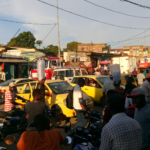US lifts ban on funding creation of lethal viruses
By Elisabeth Eaves | December 20, 2017

“Gain-of-function research” sounds so innocuous. Who wouldn’t want to gain some function? Opinions differ, though, when the “function” in question is lethality. Some researchers believe it is important to experiment with disease-causing pathogens, creating deadlier versions than those found in nature, because the lab-bred strains can teach us how a contagion might evolve. Others think the risks are too great. Even the highest-security labs have had breaches and accidents, so why create a mutant virus that could turn into a man-made pandemic?
Three years ago, recognizing the potential risks, the US government declared a moratorium on funding for all new gain-of-function studies involving influenza, SARS (severe acute respiratory syndrome), and MERS (Middle East respiratory syndrome). This week that moratorium was lifted, as the New York Times, the Washington Post, and others reported.
Gain-of-function research on these diseases can now go forward, but subject to a new set of strictures. “The pathogen to be modified must pose a serious health threat, and the work must produce knowledge — such as a vaccine — that would benefit humans,” writes Times reporter Donald G. McNeil Jr. A government panel will decide if studies can proceed. The new rules will also apply to research on diseases that were not covered by the moratorium. Meaning that if you want to, say, create a more transmissible strain of the Ebola virus, you’ll have to get government approval.
Writing for the Bulletin shortly after the moratorium began, Filippa Lentzos said that “any experiments deemed to carry risks disproportionately larger than any potential benefits or alternative safer approaches should be banned.” That makes sense, and it seems to be what the US government is trying to do with its new set of rules. But it may still be difficult to reach consensus on what risks are too great.
Publication Name: The New York Times
To read what we're reading, click here
Together, we make the world safer.
The Bulletin elevates expert voices above the noise. But as an independent nonprofit organization, our operations depend on the support of readers like you. Help us continue to deliver quality journalism that holds leaders accountable. Your support of our work at any level is important. In return, we promise our coverage will be understandable, influential, vigilant, solution-oriented, and fair-minded. Together we can make a difference.
Topics: Biosecurity, What We’re Reading















